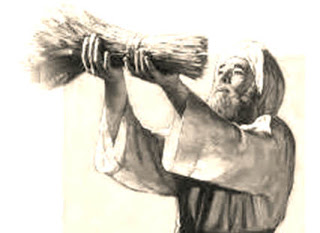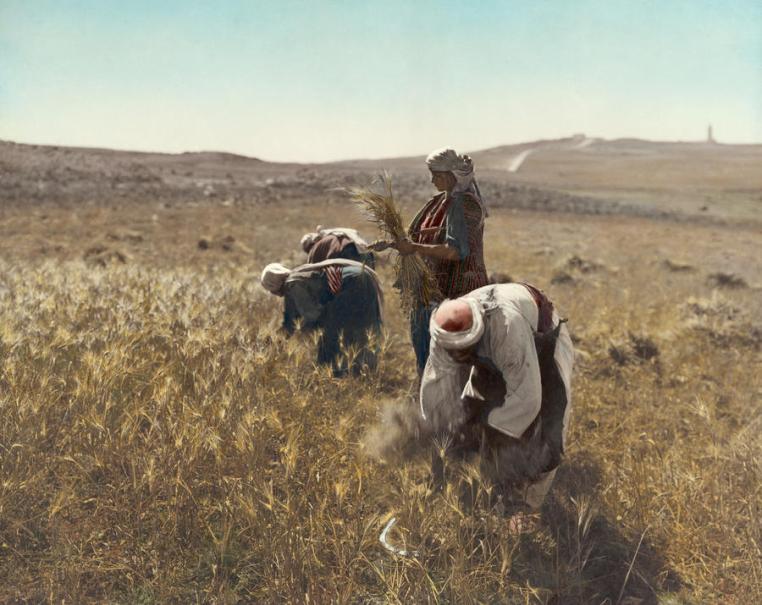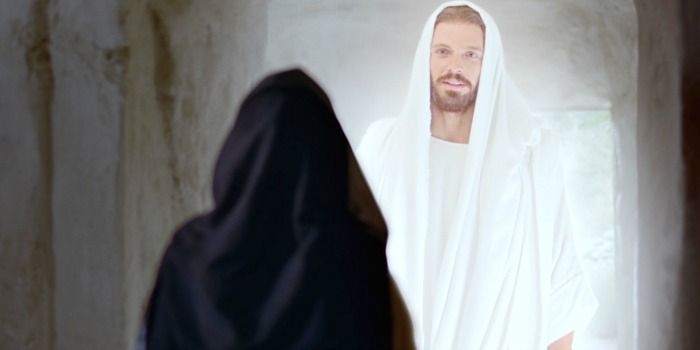Why did Elijah Visit Joseph Smith on a Jewish Holiday?
Today, April 3rd, 2017, is the 181st anniversary of Elijah’s, Elias’, Moses’, and Christ’s visit to Joseph Smith and Oliver Cowdery in the Kirtland Temple to restore essential keys for the work of the restoration.
Elijah restored the sealing keys necessary to seal families together across the eternities. Elijah’s appearance occurred on the second day of Passover, 1836. That day was a holy day, according to the Jews, with a special significance.
After Passover begins, another symbolic Jewish holiday occurs. It is called Bikkurim, First Fruits.
The word Bikkurim derives from the word bekhor, which means “first-born son.” Bikkurim is currently celebrated on the 16th of Nisan, which now is the second day of Passover week. But originally the commandment was to celebrate it “on the day after the first Sabbath occurring during Passover” (Leviticus 23:11).
The rabbis have debated which Sabbath Bikkurim should follow— the first day of Passover is a high Sabbath, but then the regular Saturday Sabbath occurs during the week of the feast.
The rabbis settled on celebrating Bikkurim on the sixteenth, the day after the High Sabbath of Passover. The year Elijah visited Joseph Smith and restored the sealing power was a rare occurrence when the Sunday falling during Passover was also the 16th of Nissan.
First Fruits of First Harvest
Passover occurs when the first barley harvest of the season is brought in. Yet while the Temple stood and offerings could be made, the flour baked in haste to make matzah was from the past year’s harvest of grain. No new grain could be used until the First Fruits offering had been made.
 Thus, this offering opens the door to the harvest. This is the offering of the first perfect sheaves of barley. The offering of the sheaf guarantees a bounteous future harvest for the rest of the year. Christ, the First Fruits of the resurrection, guarantees that all of us will be resurrected, perfectly restored both body and spirit.
Thus, this offering opens the door to the harvest. This is the offering of the first perfect sheaves of barley. The offering of the sheaf guarantees a bounteous future harvest for the rest of the year. Christ, the First Fruits of the resurrection, guarantees that all of us will be resurrected, perfectly restored both body and spirit.
In order to insure the perfection of the priest’s first fruits offering, the grain for the offering was not gleaned from the fields of the land. Instead, a special field of barley was grown under the supervision of the Sanhedrin, the Jewish senate.
The field was close to the Temple in Jerusalem. Seeds were sown in winter, during the former rains. The field was never watered by hand, nor was it fertilized by the hand of any farmer. The field would be watered only by the natural rains. (Jesus himself grew up this way, nurtured by the Spirit, waxing strong in grace and truth without needing to be taught by man.)
On Bikkurim a three-man harvesting team chosen from among the Sanhedrin came down from the Temple to reap pre-chosen bundles of barley. A crowd would watch the harvesting.
It was a joyous occasion, and the priests would ask rhetorical questions of the crowd to guide them through the harvesting. Thus, common consent became part of the harvesting process. The pattern of this ritual resonates in the nature of Christ’s mission to become the first fruits of the resurrection.
Before we came to this earth, when we were all spirit children dwelling with our Father in heaven, Jesus was pre-chosen to be the first fruits of the resurrection, and we consented to His mission. His perfect offering guaranteed a perfect future harvest — the resurrection of us all.
The priests would harvest one perfect “ephah” of barley — about two-thirds bushel. The grain would then be taken to the Temple and threshed in the Temple court. The grain was threshed with rods rather than the usual ox-drawn sledges to keep from injuring the grain. The grain was then parched over an open flame, then winnowed to remove the chaff. It was then milled and sifted very fine. Then it was presented to the Lord.
For the presentation to the Lord, one omer (about five pints) of barley flour was mixed with three-fourths pint of olive oil. A small amount of frankincense (fragrant resin) was sprinkled on top. The priest waved the offering before the Lord, burned a small amount on the altar, and then gave the rest to the Levites.
A Family Holiday
 While this special first-fruits offering was made by the priests, each family was to bring its offering also. Before the Passover pilgrimage, each family would glean barley from the family field. As the barley ripened, the family would do as the priests would do — that is, tie the chosen sheaves with cords to set them apart, and to keep them protected, just as the Lord would protect the Savior until it was his time to be offered up. The grain was then harvested and taken along on the pilgrimage to Jerusalem:
While this special first-fruits offering was made by the priests, each family was to bring its offering also. Before the Passover pilgrimage, each family would glean barley from the family field. As the barley ripened, the family would do as the priests would do — that is, tie the chosen sheaves with cords to set them apart, and to keep them protected, just as the Lord would protect the Savior until it was his time to be offered up. The grain was then harvested and taken along on the pilgrimage to Jerusalem:
“And now, behold, I have brought the firstfruits of the land, which thou, O Lord, hast given me, And thou shalt set it before the Lord the God, and worship before the Lord thy God” (Deuteronomy. 26:10).
Jesus as the First Fruits
 This is the same pattern that Christ followed, when He made His last pilgrimage to the Holy City. He knew He would be offered up; He was set apart, bound by His covenant with the Father. As the grain offering would be waved before the Lord by the priest, Jesus would rise from the grave, the First Fruits of the resurrection.
This is the same pattern that Christ followed, when He made His last pilgrimage to the Holy City. He knew He would be offered up; He was set apart, bound by His covenant with the Father. As the grain offering would be waved before the Lord by the priest, Jesus would rise from the grave, the First Fruits of the resurrection.
When Christ rose from the grave on this day, the Elect followed him. The Elect were harvested from the far fields of the land. The Bible says that they “appeared unto many” in their risen state.
As the offering of grain on Bikkurim guaranteed a perfect harvest for the rest of the year; the offering of the Savior guaranteed a perfect harvest for the Lord, since all living things will be resurrected; so Elijah’s coming—with the restoration of the sealing power—would guarantee a perfect harvest of sealed families for the Lord. Therefore, it is fitting that Elijah restored the sealing keys to Joseph Smith on Bikkurim.
Gale is the author of Day’s of Awe: Jewish Holy Days, Symbols & Prophecies for Latter-day Saints.


